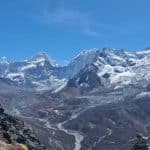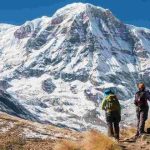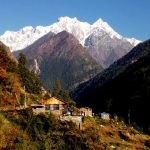Nepal Trekking Permit
Nepal Trekking Permit
Trekking in Nepal required A valid Trekking permit for every trekkers, which you will obtain from Any of Government register Trekking Companies. For the permit require Details of trekking itinerary, Copy of passport and two passports size photographs with name of Guide and porters
Trekking permit and National Park fees.
- Everest Region: US$ 30 per person
- Annapurna Region: US$ 30 per person
- Langtang Region: US$ 30 per person
- Kanchanjunga : US$ 43 per person
- Manaslu Conservation: US$ 30 Per Person
Restricted Trekking Areas which are opened for group trekking Only.
| S.N. | Area | Duration | Fee (per person) |
| 1 | Kanchangunja and Lower | The first 4 weeks After the first 4 weeks | US$ 10 per weekUS$ 20 per week |
| 2 | Upper Dolpa and Upper Mustang | The first 10 days After the first 10 days | US$ 500 US$ 75 per day |
| 3 | Manaslu | From Sept. to Nov.From Dec. to Aug. | US$ 90 per week US$ 75 per week |
| 4 | Humla (Simikot Yari) | The first 7 days After first 7 days | US$ 90 US $ 15 per day |
For the following restricted areas, group trekking permit will be issued from the Dept. of Immigration with prior approval by the Home Ministry.
| District | Trekking areas | Duration | Fee (per person) |
| Taplejung
|
Olangcugola, Lelep, Papuwa,Yamphuding
|
The first 4 weeks After the first 4 weeks
|
US$ 10 per week US$ 20 per week
|
| Sankuwashava
|
Kimathanaka, Chepuwa Hatiyagola,Pawakhola
|
The first 4 weeks After the first 4 weeks
|
US$ 10 per week US$ 20 per week
|
| Solukhumbu North
|
West way to Nangpala of NamcheVDC
|
The first 4 weeks After the first 4 weeks
|
US$ 10 per week US$ 20 per week
|
| Rasuwa
|
Thuman, Timure
|
US$ 10 per week
|
|
| Manang | Nar, Phu, North of Tilche Village ofThoche VDC | September to NovemberDecember to August | US$ 90 per weekUS$ 75 per week |
| Mugu | Mugu, Dolphy, Pulu, Bhangree | The first 7 daysAfter the first 7 days | US$ 90 US$ 15 per day |
| Humla | Limi, Muchu, Tangekhola of DarmaVDC for passing to Tibet | The first 7 days After the first 7 days | US$ 90 US$ 15 per day |
| Darchulla | Vyas | The first 7 days After the first 7 days | US$ 90 US$ 15 per day |
| Bajhang | Kanda, Saipal, Dhuli |
TIMS Permit
Nepal, aptly, has been called ‘a Trekkers’ Paradise’. Its high standing mountains, scenic hills and the luxuriant Terai offers some of the most spectacular trekking routes in the world. Passing through the diverse culture and nature, trekking in Nepal is a life-time experience which involves a certain degree of physical risks owing to the rugged topography.
With the distinction of Nepal as a trekking destination and its growing charm, a provision of Trekkers’ Information Management System (TIMS) has been implemented to control illegal trekking operations and ensure safety and security of the trekkers in general trekking areas through the mechanism of Prompt Information Service as and when required.
The past experiences have shown that difficulties have been faced while carrying out rescue operations promptly during the times of accidents and natural calamities. Because of lack of proper record system of trekkers, their exact whereabouts and the information about trekking routes, rescue and search missions used to face difficulties in spotting the trekkers missing.
The provision of Trekkers’ Information Management System (TIMS) has come into force from Jan 01, 2008. Trekking Agencies Association of Nepal (TAAN) and Nepal Tourism Board (NTB) have started recording trekkers detail and issuing TIMS Card to trekkers.
Where & how to obtain TIMS Card ?
The visiting tourists, who are interested to general trekking areas of Nepal, are required to receive TIMS Card through any one of the following:
- Kathmandu (NTB Office, TAAN Office, and Government registered trekking Companies), and
- Pokhara (NTB Office, TAAN Office, and Government registered trekking Companies)
Why is TIMS Necessary?
The following considerations have been taken into account in the process of issuing TIMS:
- All important details of trekkers and trekking routes shall be maintained on a computerized Database Management System that may be useful for safety and security of trekkers. To help carry out search and rescue operations for trekkers in case of natural calamities and other accidents by means of Authentic Information Service . To maintain a record system that includes personal details of trekkers, trekking area, trekking routes, handling agencies, duration, etc. The data generated from the system will be useful to all stakeholders:- tourism organizations, Government agencies, diplomatic missions, tour operators, research institute, etc.
- Unauthorized trekking operations will be controlled, thus, resulting into better management of trekking service and in benefit of all concerned :- trekkers, agencies, field staff, Government, etc. and also occasional untoward incidents will be better prevented.
- To upgrade the service standard and contribute for better management of sustainable mountain tourism development of Nepal.
TIMS regulatory provisions:
- Every trekkers has to compulsorily obtain a TIMS Card before they enter any of the prescribed trekking regions and routes.
- A Free individual trekker (FIT) or organized group trekkers are required to keep TIMS along with them throughout their treks.
- TIMS has to be shown to TAAN / NTB authorities, national park check posts, conservation area check posts and police check posts on demand.
- Trekkers are required to keep their copies of passports along with them for verification during trekking.
- TIMS shall be non-transferable, non-endorsable and valid only for single entry.
TIMS will not be required for:
- The expedition members permitted to climb the mountains.
- The visitors in the controlled areas permitted by the Department of Immigration.
- The foreign guests invited by the Government of Nepal.
- The authorities from different diplomatic missions in the country, who is holding official letter/s and traveling own risk .
- Visitors on certain mission recommended by the concerned department of the Government.
More information about Trekking in Nepal.
———————————————————–
Type of Trekking
——————————-
Altitude Mountain Sickness
——————————————
Trekking Equipment list
—————————————-
Best Time for Trekking in Nepal
—————————————–
Trekking Guide & Porter
Our Top Offer
Why booking with us ?
- Fully Locally Owned Company
- Quality Of Service and Competitive price
- Highly Professional Staff
- Flexible and customization trip itinerary
- 100% Customer satisfaction
Need help?
Nepal: 00977-9841273869 whatsapp: 00977-984127386924 hour customer service




